#dallet
Photo


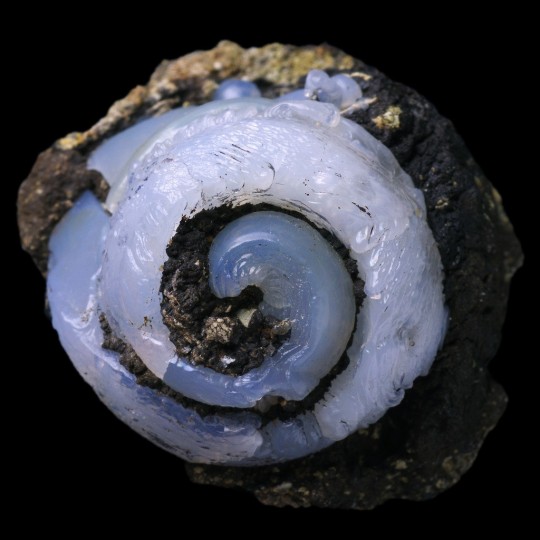
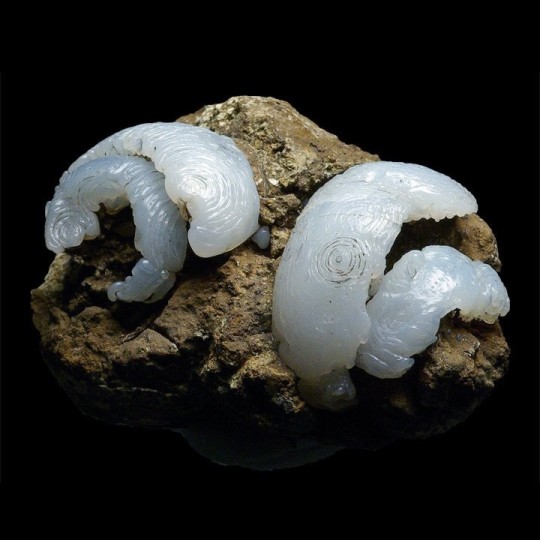

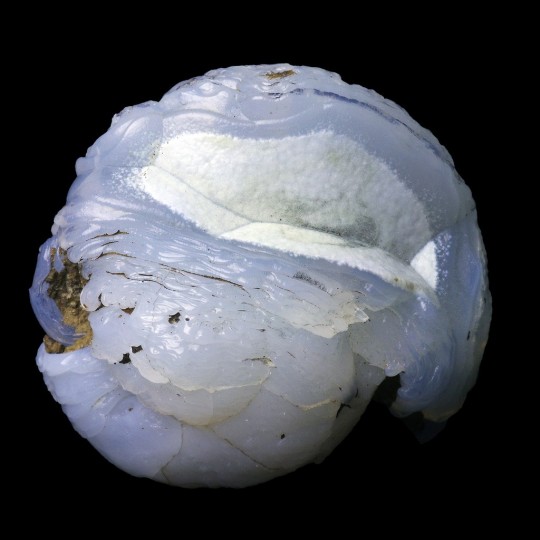
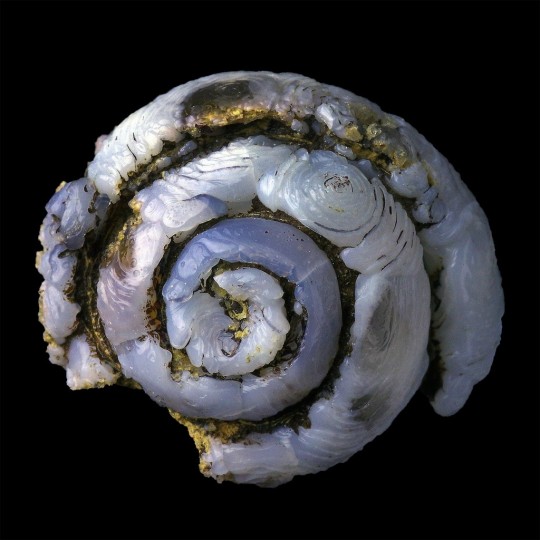



Epigenised (Opal-CT, Lussatite) Helix Ramondi snail fossil, from Dallet, Puy-De-Dôme, France.
#opal-ct#lussatite#epigenised#epigenized#snail#snails#helix ramondi#gastropod#gastropods#animal#animals#fossil#fossils#fossilised#fossilized#ancient#dallet#puy-de-dôme#puy-de-dome#france
12K notes
·
View notes
Text

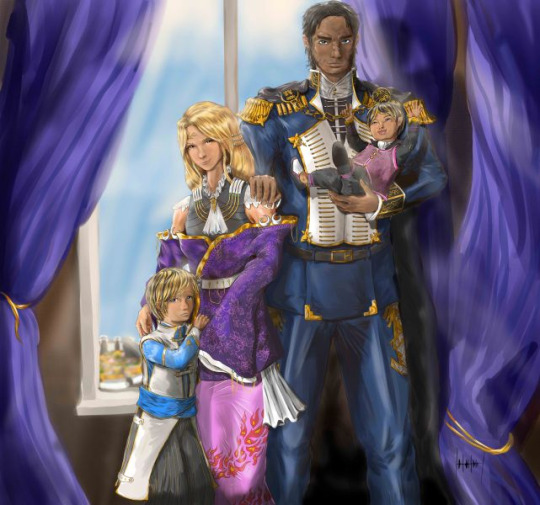

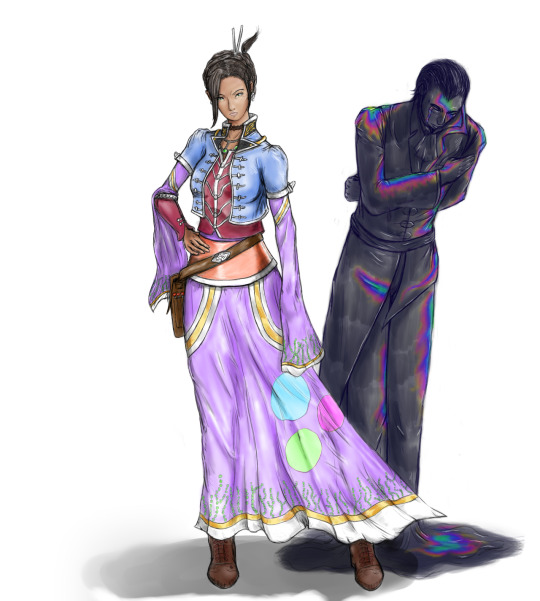



Skies Over Kholinar
Dalinar Family
Time Between Heart-Beats
Fierce Intelligence
Shallan and Jasnah Reunited
Stormblessed
Shallan Blushing
By BBQShapez
#the stormlight archive#rhythm of war#cosmere#brandon sanderson#arts arcanum#cfsbf#shallan davar#jasnah kholin#adolin kholin#evi kholin#renarin kholin#dalinar kholin#leshwi#kaladin stormblessed#cenn#dallet#ivory#maya
127 notes
·
View notes
Text

Dallet is a Alseides Guymelef pilot who is part of Dilandau's elite team known as the Dragonslayers in the anime series Vision of Escaflowne. We don't learn much about Dallet's backstory or personality aside from his devotion to Dilandau and skill in piloting the Guymelef, but his character design makes him recognisable in all the scenes with the Dragonslayers.
My Picmix composition features official animation art from the anime along with my digital edits.
#escaflowne#vision of escaflowne#tenkuu no escaflowne#the vision of escaflowne#dallet#animated gif#gifs#gif#picmix#character portrait#anime#anime boy#bishonen#french boy#guymelef#zaibach#alseides#dragon slayers#medieval#black and blue#glitter gif#long haired men#long haired guys#black roses#dark colors#fantasy anime#dark fantasy#sword and sorcery#90s anime#90s anime aesthetic
6 notes
·
View notes
Text

Fanart From Ages Past...
This time it's a little chibi work for Escaflowne called "Follow The Leader" that I drew in 2006. It shows Dilandau and his Dragonslayers (from left to right) Shesta, Gatti, Dallet, Migel, Guimel, Viole, Kagero, Ryuon, Yaifa, and my RP original character, Fuuoshi. I remember I drew it by hand on three sheets of printer paper I'd taped together.
#escaflowne#threshie#threshasketch#dilandau albatou#shesta aka chesta#gatti#dallet aka dalet#migel#guimel#viole aka biore#kagero#ryuon#yaifa#fuuoshi#OC#chibi art#fanart from ages past#2006
16 notes
·
View notes
Text
Wisconsin’s conservative-controlled Supreme Court ruled Friday that absentee ballot drop boxes may be placed only in election offices and that no one other than the voter can return a ballot in person, dealing a critical defeat to Democrats in the battleground state.
The court did not address the question of whether anyone other than the voter can return his or her own ballot by mail. Election officials and others had argued that drop boxes are a secure and convenient way for voters to return ballots.
The decision sets absentee ballot rules for the Aug. 9 primary and the fall election; Republican U.S. Sen. Ron Johnson and Democratic Gov. Tony Evers are seeking reelection in key races.
The court’s 4-3 ruling also has critical implications in the 2024 presidential race, in which Wisconsin will again be among a handful of battleground states. President Joe Biden defeated Donald Trump in 2020 by just under 21,000 votes, four years after Trump narrowly won the state by a similar margin.
The popularity of absentee voting exploded during the pandemic in 2020, with more than 40% of all voters casting mail ballots, a record high. At least 500 drop boxes were set up in more than 430 communities for the election that year, including more than a dozen each in Madison and Milwaukee — the state’s two most heavily Democratic cities.
After Trump lost the state, he and Republicans alleged that drop boxes facilitated cheating, even though they offered no evidence. Democrats, elections officials and some Republicans argued the boxes are secure.
The conservative law firm Wisconsin Institute for Law & Liberty sued in 2021. The state Supreme Court in February barred the use of drop boxes outside election clerk offices in the April election for local offices, such as mayor, city council and school board seats. The court ruled Friday on the question of whether to allow secure ballot boxes in places such as libraries and grocery stores.
State law is silent on drop boxes. The court said the absence of a prohibition in state law does not mean that drop boxes are legal.
“Nothing in the statutory language detailing the procedures by which absentee ballots may be cast mentions drop boxes or anything like them,” Justice Rebecca Bradley wrote for the majority.
The court said absentee ballots can be returned only to the clerk’s office or a designated alternative site but that site cannot be an unstaffed drop box. The bipartisan Wisconsin Elections Commission had told local election officials the boxes can be placed at multiple locations and that ballots can be returned by people other than the voter, but put that on hold pending the Supreme Court’s ruling.
Rick Esenberg, president of the conservative law firm that brought the case, said the ruling “provides substantial clarity on the legal status of absentee ballot drop boxes and ballot harvesting.” He said it also makes clear that state law, not guidance from the Elections Commission, is the final word on how elections are run.
Concerns about the safety of drop boxes expressed by the majority “is downright dangerous to our democracy” Justice Ann Walsh Bradley wrote in dissent.
“But concerns about drop boxes alone don’t fuel the fires questioning election integrity,” she wrote. “Rather, the kindling is primarily provided by voter suppression efforts and the constant drumbeat of unsubstantiated rhetoric in opinions like this one, not actual voter fraud.”
Republicans who control the Wisconsin Legislature have also tried to enact laws limiting the use of absentee ballots, but Evers has vetoed them.
Republicans have made similar moves since Trump’s defeat to tighten access to ballots in other battleground states. The restrictions especially target voting methods that have been rising in popularity, erecting hurdles to mail balloting and early voting that saw explosive growth during the pandemic.
Bradley was joined in the majority by fellow conservative Justices Patience Roggensack, Brian Hagedorn and Chief Justice Annette Ziegler. In addition to Ann Walsh Bradley, Justices Rebecca Dallet and Jill Karofsky dissented.
#us politics#news#wisconsin#state supreme court#voter disenfranchisement#voter suppression#absentee ballot#ballot drop boxes#Gov. Tony Evers#sen. ron johnson#2022#Wisconsin Institute for Law & Liberty#Justice Rebecca Bradley#Rick Esenberg#Justice Ann Walsh Bradley#Justice Patience Roggensack#Justice Brian Hagedorn#Justice Annette Ziegler#chief Justice Annette Ziegler#Justice Rebecca Dallet#Justice Jill Karofsky
8 notes
·
View notes
Text
Wisconsin Supreme Court chief justice accuses liberal majority of staging a 'coup'
The emails are the latest sign of broiling tensions on the court since liberals took control.
MADISON, Wis. (AP) — The conservative chief justice of the Wisconsin Supreme Court on Monday told the new liberal majority in a scathing email that they had staged a “coup” and conducted an “illegal experiment” when they voted to weaken her powers and fire the director of state courts.
Chief Justice Annette Ziegler, in two emails obtained by The Associated Press, said that firing and hiring a…

View On WordPress
#afternoon update#Crime & courts#Justice Annette Ziegler#Justice Rebecca Dallet#Wisconsin Supreme Court
0 notes
Text
'Oppenheimer, Christopher Nolan’s three-hour dramatization of the life of the man who directed the building of the atomic bomb, opened to mostly rapturous reviews last month. It depicts the rise to eminence of the brilliant theoretical physicist who was selected during World War II to run the secret laboratory at Los Alamos, New Mexico, where the atomic bomb was built. General Leslie Groves, overall director of the Manhattan Project, passed over several Nobel laureates, including men who had directed major experimental physics projects. By contrast, J. Robert Oppenheimer had never organized anything more complicated than a graduate seminar. And yet he recruited, assembled, and managed hundreds of prickly egos and made them into a cohesive team, solved innumerable logistical and scientific problems, and produced a working bomb within three years. Lauded as one of America’s greatest scientists after the war, in 1954 he was humiliated by the loss of his security clearance after facing accusations of having Communist sympathies and for opposing development of the “Super,” or hydrogen, bomb.
Oppenheimer is visually arresting, well-acted, and reasonably faithful to the historical facts. It offers a nuanced portrait of Oppenheimer, who was a tormented person even before he was forced to live with the knowledge that the bomb he and his fellow scientists had created immolated tens of thousands of people and raised the specter of a nuclear holocaust. But the film gets one very important feature of Oppenheimer’s life wrong.
Like the book that inspired it—the Pulitzer Prize–winning biography by Kai Bird and Martin Sherwin called American Prometheus—the movie maintains that Oppenheimer was truthful when he denied ever being a member of the Communist Party of the United States (CPUSA).
Following the lead of Bird and Sherwin, Oppenheimer acknowledges that many of its subject’s relatives—including his wife Kitty, brother Frank, and sister-in-law Jackie—had been party members, as had numerous friends and graduate students Oppie taught and mentored. It mentions his generous donations to causes supported by the CPUSA, most notably during the Spanish Civil War. It details his support of the efforts by the Communist-aligned Federation of Architects, Engineers, Chemists, and Technicians to unionize the radiation laboratory at Berkeley. But it also accepts, even stresses, Oppenheimer’s own denials of party membership and repeats Kitty Oppenheimer’s insistent testimony that Robert had never joined the party. This echoes the claims of Bird and Sherwin that Oppenheimer was never more than a Communist fellow traveler—someone who shared the party’s beliefs and policy prescriptions but never actually joined it or submitted to the party’s rules and discipline.
Even when Bird and Sherwin published their award-winning biography in 2005, there was already abundant evidence that Oppenheimer had indeed once been a member of the Communist Party of the United States. Their efforts to explain away or obfuscate the clear evidence that Oppenheimer lied under oath about it have been further eroded by material that has emerged from Russian archives since. But to this day, Bird (Sherwin died in 2021) has not responded to that evidence, and the writer-director Christopher Nolan did not look deeper into the question when he crafted his screenplay. That is unfortunate, because reckoning with the truth about Oppenheimer would have deepened the movie’s portrait of this singular American and added more layers of ambiguity and complexity to what is already a remarkably ambiguous and complex work of portraiture.
Even before the evidence from the Russian archives, proof that Oppenheimer had been a Communist did not emerge from his enemies or from unreliable witnesses or ambivalent phrases in sketchy documents. Several of his friends, acquaintances, and graduate students—all of whom remained left-wingers—wrote memoirs or gave interviews in which they detailed Oppie’s membership in the Communist Party. In an interview for Gregg Herken’s 2002 book, Brotherhood of the Bomb, Haakon Chevalier—a professor of French literature—said that he and Oppenheimer had been members of “a ‘closed unit’ of the Communist Party” at the University of California at Berkeley. (A “closed unit” means a “secret unit.”) In 1964, Chevalier had written to Robert to inform his one-time intimate that in a forthcoming memoir called Oppenheimer: The Story of a Friendship, he was going to confirm they had both been Communists. Oppenheimer responded angrily, threatening a lawsuit, and in the published version Chevalier called their unit a Marxist discussion group. Chevalier’s widow allowed Herken to read her private journal and memoir, in which she confirmed that both her husband and Oppenheimer had been members of a closed CPUSA unit and noted, “Oppie’s [Oppenheimer’s] membership in a closed unit was very secret indeed.”
Chevalier also identified Oppenheimer as the author of two 1940 pamphlets put out by the “College Faculties Committee, Communist Party of California.” Oppenheimer, who was the scion of a wealthy New York family, had also paid for the printing and distribution of those pamphlets. Herken interviewed Philip Morrison, a former Oppenheimer graduate student and then Communist, who claimed that he, Morrison, had taken to the printer a third pamphlet written by Oppenheimer justifying the Soviet invasion of Finland. Still another graduate student, David Hawkins, could not confirm that Oppenheimer was a party member but agreed that Oppenheimer had hosted CPUSA meetings at his home.
Gordon Griffiths, a graduate student and Communist at Berkeley from 1940 to 1942 and later a prominent historian, late in life wrote an unpublished memoir that discussed his role as party liaison with the small Communist faculty group that included both Chevalier and Oppenheimer. In Griffiths’ words, the faculty group
met regularly, to the best of my recollection, twice a month, in the evening at Chevalier’s or Oppenheimer’s house. I brought party literature and collected dues from [Arthur] Brodeur [a scholar of ancient Icelandic sagas] and Chevalier. I was given to understand that Oppenheimer, as a man of independent wealth, made his contribution through some special channel. Nobody carried a party card. If payment of dues was the only test of membership, I could not testify that Oppenheimer was a member, but I can say, without any qualification, that all three men considered themselves to be Communists.
FBI wiretaps at the time and made public decades later provided more corroboration that senior Communist officials considered Oppenheimer to have been a party member. In 1940, the Bureau learned of a private meeting of senior Communists that was to be held at Chevalier’s home. Surveillance revealed Oppenheimer’s car parked outside the house (a moment depicted in the movie). In December 1943, FBI listening devices picked up a conversation between Steve Nelson, the party’s leader in the Bay Area, and Bernadette Doyle, its organizational secretary. In that conversation, Nelson and Doyle spoke of both Robert and his brother Frank as CPUSA members, but Nelson noted that Robert had become inactive. As late as 1945, a bug at a meeting of the North Oakland Communist Club overheard one official state that Oppenheimer was a party member and another call him “one of our men.”
Nelson had been a close friend of Kitty Oppenheimer’s second husband, Joe Dallet, a Communist Party official killed while serving in the Abraham Lincoln Brigade in Spain a few years before Kitty and Robert married. When Nelson moved to the Bay Area in 1939, where one of his tasks was to serve as a liaison with Soviet intelligence agencies, he became friendly with Kitty and Robert. Before Robert joined the Manhattan Project, he told Nelson in general terms about the beginnings of the research into an atomic bomb. In March 1943, an FBI wiretap recorded Joe Weinberg, an Oppenheimer graduate student and ardent Communist, telling Nelson that Oppie was becoming increasingly uncomfortable with his Communist graduate students. Nelson pressed Weinberg for information about the atomic project and indicated that Oppenheimer had previously told him in general terms about it but had recently become more reticent. A week later, Nelson met with a Soviet intelligence officer from the San Francisco Soviet consulate.
To Bird and Sherwin, none of this evidence was dispositive (and the movie avoids mentioning it). In their eyes, because Oppenheimer never had a party card, he was not a “formal, card-carrying member.” But this is wrong-headed. Many Communists never held party cards. Those belonging to professional groups were treated differently from regular Communists. Most important, they were exempted from the work required of most recruits—selling the Daily Worker, manning picket lines, attending rallies, etc.,—because doing so would have revealed their identities.
Finally, just because Oppenheimer did not pay regular dues did not mean he was not a Communist. In August 1939, a senior CPUSA official gave a report to the Communist International in Moscow on the organizational status of the American party. He presented three levels of membership. The first was made up of “enrolled” members. These were people who had joined the CPUSA and were carried on its membership rolls. Next came “registered” members. These were persons who had newly registered or reregistered with a local party unit. Finally, the smallest number represented “dues-paying” members. So whether you paid dues, annually registered with a local party unit, or had enrolled in the party in the previous few years, you were a Communist in the eyes of the CPUSA. The party regarded all three definitions as signifying membership with different degrees of current participation. Now note how Bird and Sherwin view it. They acknowledge that the financial records of the Bay Area party obtained by an FBI surreptitious entry (or burglary) show that contributions by someone code-named X-1 totaling $1,800 a year (the equivalent of close to $40,000 today) were made by Oppenheimer, but Bird and Sherwin insist that “he made contributions to causes, but never paid dues at all”—as if contributions well in excess of dues were not accrued by the CPUSA. Following Bird and Sherwin, Christopher Nolan shows Kitty testifying during the 1954 hearing on the revocation of Robert’s security clearance that his contributions went through the Communist Party but not to the CPUSA—and portrays this bizarre act of hairsplitting as though it were obviously and undeniably true.
In the end, the words of Oppenheimer’s friends and the evidence from the wiretaps and burglary, according to Bird and Sherwin, all amounted to nothing more than a case of mistaken identity. Oppenheimer left the impression that he was a Communist, so friends and party members naturally assumed he was and spoke of him as Communist. In fact, Bird and Sherwin even suggest he may have fooled himself: “For a brief time,” they write, “he may well have thought of himself as an unaffiliated comrade” even though he wasn’t. No, Oppenheimer was an ardent New Dealer and FDR loyalist.
If he had been, why would he have written fiercely anti-FDR pamphlets in 1940 during the period when the Nazis and Soviets were in an alliance and Oppenheimer actively supported the Soviet invasion of Finland? Bird and Sherwin write that at that moment, Oppenheimer’s “rational style had abandoned him” and that his “words reveal someone primarily worried about the impact on domestic politics of a world teetering on the brink of a great disaster.” What they cannot admit is that he was parroting the CPUSA’s anti-interventionist, anti-FDR, anti-New Deal line—and this after thousands of disillusion-ed close allies of the CPUSA abandoned (some permanently, some temporarily) their alignment with the party because of its new friendship with Hitler. Several hundred members openly quit the CPUSA because it had abandoned the putative anti-fascism that had led them into the party. Odd behavior, indeed, if Oppenheimer had been only a dedicated liberal.
Bird and Sherwin are not alone in brushing aside any suggestion that Oppenheimer had been a party member. To give them a tiny bit of credit, they at least mention contrary evidence if only to explain it away with casuistic sophistry. Other biographers have been more cavalier. In his 2004 book, Oppenheimer, Jeremy Bernstein simply states, “I believe Oppenheimer.” David Cassidy’s J. Robert Oppenheimer (2005) notes the evidence but, without confronting it, judges that “there is so far no conclusive evidence that Oppenheimer was ever [a] member of the Communist Party.” Jennet Conant’s 109 East Palace: Robert Oppenheimer and the Secret City of Los Alamos (2005) never addresses the matter of the Berkeley faculty CP unit and, even as she discusses security officials’ suspicions about Oppenheimer, dismisses the whole matter via a reference to his “earlier dabblings in left-wing politics.” Priscilla McMillan, in The Ruin of J. Robert Oppenheimer (2005), is decidedly ambiguous in her treatment of the evidence but suggests he had been only a fellow traveler. Charles Thorpe’s Oppenheimer (2006) asserted “there is no conclusive or firm evidence that Oppenheimer ever joined the Communist Party.”
Only Barton Bernstein, a Stanford University historian who has written several detailed analyses of the Oppenheimer controversy, has followed in Herken’s path in judging the evidence carefully. He began as a skeptic about Oppie’s party membership, but in a 2023 essay on the Washington Decoded website, Bernstein concluded that material from Russian archives “seems even further to tighten an already very substantial case: Robert Oppenheimer had been a secret CP member for a few years.”
What is that new evidence?
It comes from the Vassiliev Notebooks. These are copies and summaries of documents from the KGB archive that we discussed extensively in our 2009 book, Spies: The Rise and Fall of the KGB in America. The notebooks document that prior to 1943, the GRU, or Soviet Military Intelligence, was leading the effort to recruit scientists on the West Coast and fruitlessly tried to recruit Oppenheimer as an active agent passing secrets. By the end of 1943, the KGB took over the effort. Several messages sent between Moscow and San Francisco urged recruitment of Oppenheimer, in which he was described as a secret or undeclared member of the CPUSA. In February 1944, the KGB’s Moscow Center prepared a report that listed Oppenheimer, who had been given the code name “Chester,” as a prime target for recruitment. Moscow Center identified Oppenheimer as a “secret member of the fellowcountryman org.,” the term used to describe the CPUSA. But it warned that because Oppenheimer was “kept under special security … the fellowcountryman organization received orders from its center to break off relations with ‘Ch[ester]’ to avoid his exposure.”
Despite frequent entreaties from KGB headquarters in Moscow in 1944 and 1945 to use Oppenheimer’s secret party membership as a lever to recruit him as a spy, and various efforts to use different Communist acquaintances to cultivate him, the KGB had no luck. Recalled to Moscow in 1944 because of his lack of success, Gregory Kheifets, the KGB station chief in San Francisco, wrote a report explaining that his efforts to contact Oppenheimer and his brother Frank had fallen apart after Isaac Folkoff, a Communist Party liaison with the KGB, told him that “due to their special military work, the [party’s] connection with them was suspended.”
Taken as a whole, these messages confirm that the KGB was anxious to recruit Oppenheimer as a spy, expected that he would be receptive, and was frustrated by his coldness on the few occasions when Communist friends were able to meet him after he had begun working on the Manhattan Project. General Leslie Groves had selected Oppenheimer to direct the laboratory where the atomic bomb would be built in the fall of 1942. Whether Oppenheimer recognized and acted on the need to insulate himself from his Communist past in order to participate in the Manhattan Project, or whether he had a sudden epiphany about the seriousness of security, or whether he was responding to his wife’s wishes, he began to distance himself from his Communist graduate students, pay more attention to security, and then dropped out of the CPUSA.
One scene in the movie deals with this. In the period prior to joining the Manhattan Project, his Berkeley colleague, the Nobel laureate physicist Ernest Lawrence, strongly counsels Oppenheimer to cease his political activities and focus strictly on science. What is not mentioned in the movie is that Lawrence, one of the original scientists selected for the Manhattan Project, was sponsoring Oppenheimer’s recruitment. Whatever initiated his shift, Oppenheimer’s views continued to evolve. By the late 1940s, those views were well within the mainstream of anti-Communist liberalism, so much so that a 1950 KGB document in Vassiliev’s Notebooks labels Oppenheimer as one of several “leading reactionary scientists” whom the KGB should seek to discredit.
The question of whether Oppenheimer had been merely a fellow traveler or a member of the CPUSA is more than a matter of semantics. As the movie makes clear, even after Groves had chosen Oppenheimer as director, Army security balked at giving him a security clearance and had to be ordered to do so by Groves in July 1943. Suspicions about Oppenheimer had intensified in the winter of 1942–43 just before he left for Los Alamos. Haakon Chevalier privately told Oppenheimer that a friend, the chemist George Eltenton, had proposed that Oppie transmit scientific information to an acquaintance Eltenton had in the Soviet consulate. We see this in the movie, in a scene set in a kitchen. Both Chevalier and Oppenheimer later agreed that the latter had angrily rejected the overture. But Oppenheimer did not report the recruitment effort to security officials until six months later. While naming Eltenton as someone to watch as a potential spy, Robert initially withheld both his own name and Chevalier’s. This initial interview is depicted in the movie—in which Oppenheimer is grilled by a counterintelligence officer played by Oscar-winner Casey Affleck—and comes off as just as awkward as it likely was. In later interviews with Army security, Oppenheimer finally admitted he had been approached, but he continued to refuse to name Chevalier or anyone else who might have been involved. Not until December 1943, in response to a direct order from Groves, did he name Chevalier (which we do not see).
In addition to his bewildering behavior about the Chevalier incident, over the years Oppenheimer lied on numerous government security questionnaires. He flatly denied that he had ever been a party member, admitting only that he had been a left-winger with numerous Communist friends and a contributor to causes also supported by Communists. When he faced a hearing on the revocation of his security clearance, Oppenheimer could have taken the option of being honest and candid about his Communist past and explained why he had dropped out. After all, many Communists of the time became ex-Communists and even anti-Communists. But his record of lies might have cost him his security clearance in any case. Perjury is obvious grounds for the denial of a security clearance, since it opens up the perjurer to blackmail—or prosecution. Oppenheimer might have hesitated about getting friends and relatives into trouble, or deeper trouble. Or he might have been reluctant to give ammunition to the many enemies he had made among military leaders and such physicists as Edward Teller by opposing development of the hydrogen bomb after World War II.
Just as important, admitting past false statements may have been particularly psychologically difficult for Oppenheimer, whose arrogance was considerable and whose tolerance for those he regarded as fools was very limited. (Haakon Chevalier wrote a thinly disguised novel about him with the title The Man Who Would Be God that provides glimpses of Oppenheimer’s imperious nature.) Whatever the reason, confessing to lies about his political past was not a step Oppenheimer was willing to take. In the end, he made a particularly poor witness and his testimony did not help his case to maintain his security clearance. In the movie, Kitty angrily confronts Robert for refusing to fight back more strongly against the attacks on his character and actions. Left unexplored is whether his knowledge of his own deceit helped paralyze him.
Knowing what we know now, America’s public interest would have been best served if Oppenheimer had been able to continue in his role as a consultant to the government on various atomic projects. The evidence by the mid-1940s was that he had left his earlier Communist allegiance behind and was anything but a party sympathizer. But one of the major contributing factors to his loss of security access was his own unwillingness to provide a candid and honest account of his earlier Communist ties and why he had put them aside. If he continued to lie about such matters, how could he now be trusted?
None of this detracts from the greatest achievement of Oppenheimer’s life and one of the great scientific and engineering achievements in human history. It does, however, complicate the morality-play version of his life. Unquestionably, the hearing that denied the renewal of his security clearance (and that is portrayed so powerfully throughout the movie) was stacked against him. His archnemesis, Lewis Strauss (played by Robert Downey Jr.), orchestrated a dishonest and biased attack, deprived Oppenheimer and his lawyer the opportunity to see key evidence, and distorted some of his views and behavior. But Oppenheimer’s lack of candor made him a contributor to his own destruction. That truly makes the story of his life a Greek tragedy. As good a movie as it is, Oppenheimer would have been richer still if it had plumbed these deep waters.'
#Oppenheimer#Christopher Nolan#Kai Bird#Martin J. Sherwin#Leslie Groves#Lewis Strauss#Robert Downey Jr.#Frank Oppenheimer#American Prometheus#Gregg Herken#Brotherhood of the Bomb#Haakon Chevalier#Kitty#Joe Dallet#Jeremy Bernstein#David Cassidy#J. Robert Oppenheimer#Jennet Conant#09 East Palace: Robert Oppenheimer and the Secret City of Los Alamos#Priscilla McMillan#in The Ruin of J. Robert Oppenheimer#Charles Thorpe#Vassiliev Notebooks#Ernest Lawrence#The Manhattan Project#Los Alamos#George Eltenton#The Man Who Would Be God
1 note
·
View note
Note
✨RANDOM OC ASK: ✨
What is your OC's most shameful habit?
It could be something they personally find shameful. The people around them find it shameful. Or just something you just find weird but they do anyway.

Thank you for the ask! I decided to do this for two NPCs in the game I'm DMing as the players have recently become trapped underground with two factions within the game.
Jolu (jo-LOO) is a bugbear and a section boss for the Porter's Union. He has 6 porters left alive, and intends to keep them that way. His shameful habit is that he secretly buys candy from the street urchins because he has a sweet tooth and the porters are mostly fed crab meat.
Dallet (DAWL-ut) is a tiefling and a pod guide for his grove. One of the PCs has kidnapped the leader of the grove, so Dallet and his 3 pod-mates are hunting them down. His shameful habit is that he only pretends to meditate when the other druids are doing so. In general, he pretends to be a lot more relaxed than he actually is and is looking forwards to getting quite violent with the PCs.
15 notes
·
View notes
Text
“A smaller group of soldiers, including Dallet, waited behind with the wounded. One of those—a thin man with black Alethi hair speckled with a handful of blond hairs, marking some foreign blood— pulled a long red ribbon from his pocket and attached it to his spear. He held the spear aloft, letting the ribbon flap in the wind.” -TWOK ch1: Stormblessed.
Kaladins chapter symbol:

#cosmere#brandon sanderson#stormlight archive#kaladin stormblessed#idk if anyone has ever made this connection or not#but I think it’s cool
229 notes
·
View notes
Text





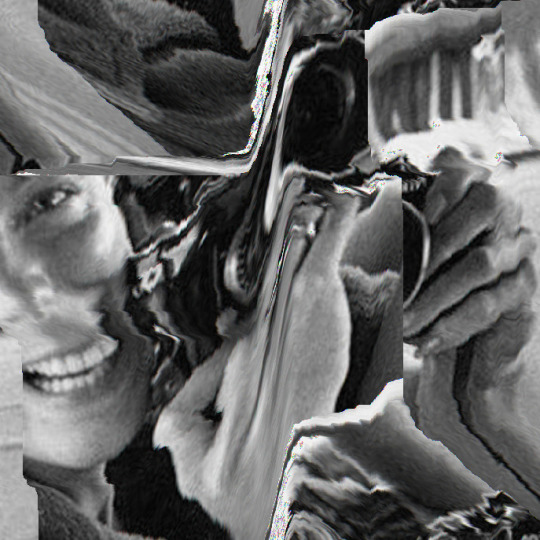


Carnival - not found with Xavier Dallet
11 notes
·
View notes
Text

Xavier Dallet - Untitled 21/07/2023
Source: Perfect users ( and the breathing mansion) - Facebook
9 notes
·
View notes
Photo

Helix Ramondi (land snail fossil) epigenised with Lussatite. Dallet, France. By Geologist2K12 on Facebook.
#snail#snails#helix ramondi#gastropod#gastropods#animal#animals#fossil#fossils#opal-ct#lussatite#mineral#minerals#epigenised#epigenized#dallet#france#ancient#facebook
57 notes
·
View notes
Note
"Nothing harder than orange"? 👀
So there's this throwaway line in RoW i believe, when Adolin and Veil are taking Kaladin out drinking instead of letting him wallow in his depression that says they don't let him drink anything harder than orange when he's depressed. Which implies they *have* and had disastrous results. Also where i got the title from, since it's supposed to be that outing.
The gist of it is, some facet of Shallan catches the hints of Kaladin being affected by his depression and Veil suggests they let him drink it out. Specifically after a confrontation with the Fused where someone either died or was injured (not that it would stick to a Radiant but depression be like that). Anyway, Kaladin tends to run through the names of those who he feels he failed to protect when he's in a slump, and this starts happening externally instead of internally. Adolin and Shallan recruit help in taking Kaladin back (Teft) and have something of a talk the next morning. I haven't gotten that far yet tho. Here's an excerpt from after Kaladin gets trashed:
Syl drifts back into Kaladin's view, a ribbon of light before changing into her girlish form. Kaladin can't help a sigh of relief at the sight of her. He hadn't killed her again. Good.
Movement to his side catches his attention. It's… his Sargent.
"... Dallet?" The figure freezes.
"No lad, it's Teft," he says, gently.
"Right, yeah," Kaladin mumbles. That makes more sense. Dallet was dead. Dead with the rest of his old squad.
"Lets get you back to the barracks. You can sleep it off with Bridge Four tonight. Up you go." Adolin is in front of Kaladin, and Teft and Veil maneuver him onto Adolin's back. Kaladin rests his head on Adolin's shoulder and tries not to cry.
13 notes
·
View notes
Link
I found a “new” vintage Escaflowne fansite for your enjoyment! I love the personal touch of these vintage websites with the “author’s notes” type text and the funny ramblings about which character they have crushes on. The little animated mascots of Dilandau and co are so cute!
#old web#vintage#nostalgia#nostalgiacore#2000s#y2k#2000s internet#otaku culture#escaflowne#vision of escaflowne#tenkuu no escaflowne#dilandau#dilandau albatou#dragonslayers
7 notes
·
View notes
Text
Dallet be giving me Teft vibes D:
Also the wayyyyy he's reassuring Cenn adsljkfdsfjdlsjkdfdksl
Knowing what happens makes this all so much sadder :<
#tWoK#LIKE COME ON#TELLING THE BOY HE'S NOT GONNA DIE#AND BELIEVING IT BECAUSE YOU HAVE A REASON#*AND AS A READER KNOWING THAT THEY DIE ANYWAY*
4 notes
·
View notes
Text
A 15-year-old who shot eight people at Mayfair Mall in 2020 should be tried as an adult, a divided Wisconsin Supreme Court ruled Wednesday.
The majority in the 4-3 decision declared Children's Court Judge Brittany Grayson erroneously exercised her discretion when she denied prosecutors' request that the boy be waived to adult court.
The Court of Appeals called for a new hearing on the issue, but the Supreme Court said that was unnecessary.
"There exists no reasonable basis for denying the State's waiver petition," Chief Justice Annette Ziegler wrote. She was joined in the majority opinion by justices Patience Roggensack, Rebecca Bradley and Jill Karofsky.
Justice Brian Hagedorn dissented, joined by justices Ann Walsh Bradley and Rebecca Dallet.
"Although another judge might have reasonably reached a different conclusion on the same set of facts, this decision was within the discretion the law affords to circuit court judges," Hagedorn wrote.
"The majority, however, displaces the circuit court's discretion with its own, even as it pays lip service to the deferential standard of review we are duty-bound to apply."
The case began in juvenile court, so the defendant has only been identified by a pseudonym, Xander. The boy, 15 at the time of the shootings, is charged with eight counts of first-degree reckless injury — punishable by up to 15 years in prison for adults — and being a minor with a gun, a misdemeanor. Prosecutors say he opened fire in the mall on Nov. 20, 2020, injuring three people in a group he was confronting, a friend who was with him, and four random shoppers.
Dozens of police responded and the mall was closed until the next day.
Prosecutors sought waiver to adult court. Grayson, after hearing from a social worker and a psychologist, determined Xander should remain in juvenile court. Xander had already been adjudicated delinquent in another case and hadn't complied entirely with his treatment.
The Court of Appeals reversed the decision and ordered a new hearing before a different judge. Xander's lawyers asked the Supreme Court to weigh in first.
4 notes
·
View notes